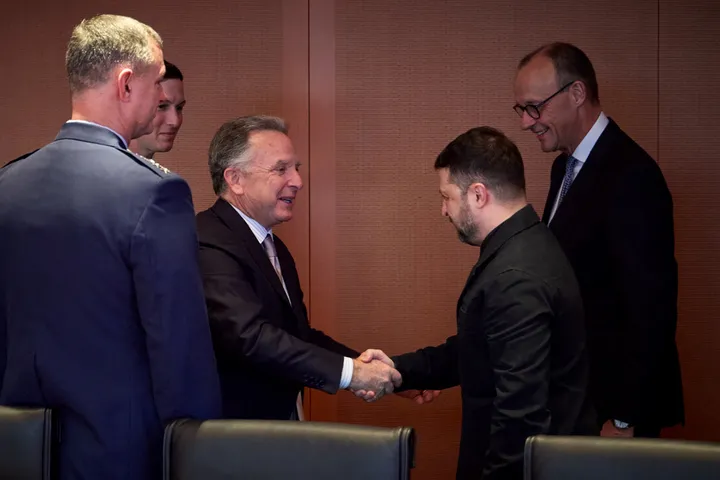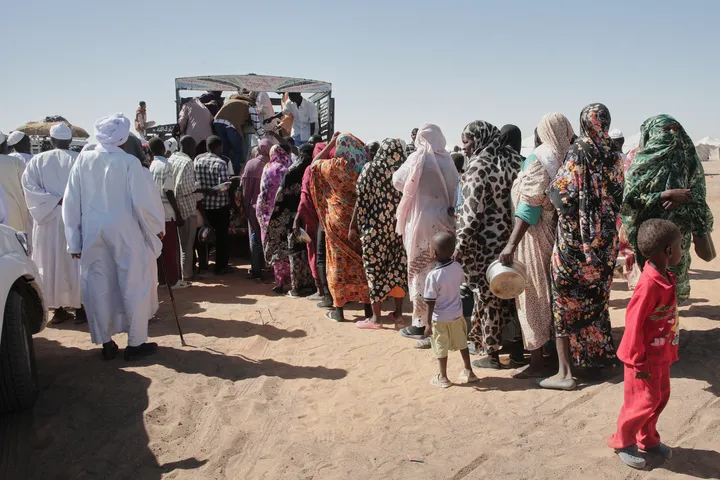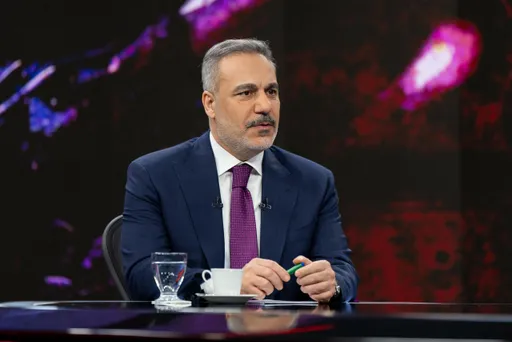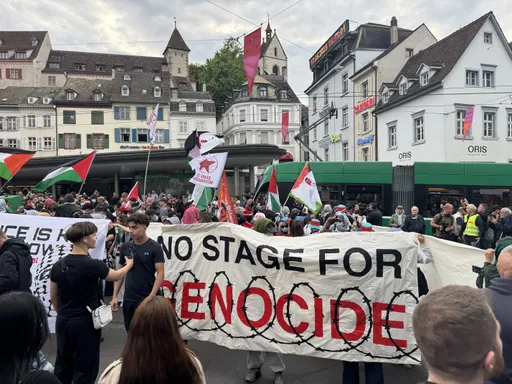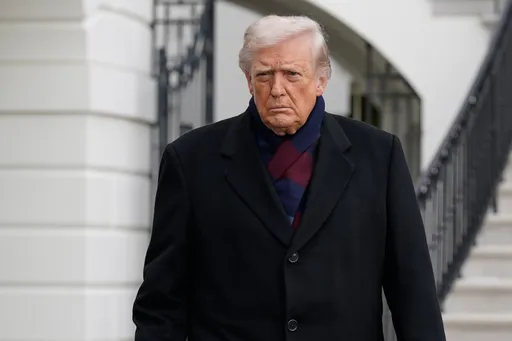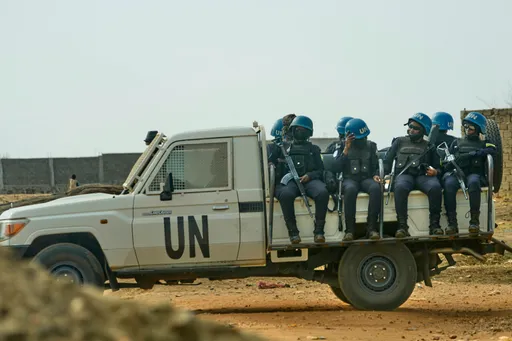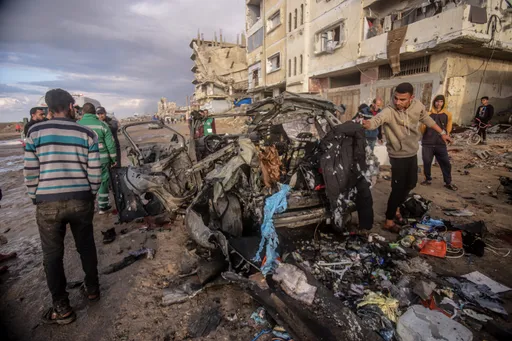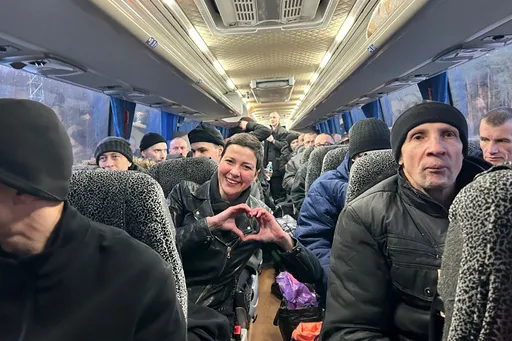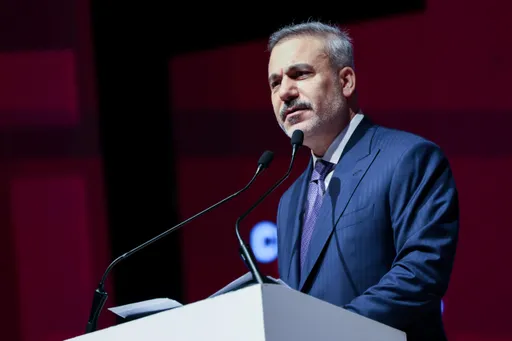Protests in sanctions-hit Iran are becoming increasingly violent and the establishment is painting them as part of a foreign plot to weaken the country’s regional dominance.
The protests began after the government increased fuel prices by 50 percent and slashed subsidies.
Ali Vaez, Director of the Iran Project at the International Crisis Group, thinks that the Iranian state is trying to establish a link between the protests at home and other ongoing protests in Iraq and Lebanon - all designed to bring the country down.
“If you compared the protests we saw in December 2017-January 2018, then, I think the system was much more patient and much more tolerant to demonstrators and was willing to really allow them space to state their anger, but this time around it really appears to me that the system is much more concerned and panicked,” says Ali Vaez.
Tehran wields enormous influence in Iraq and Lebanon and protesters there have been demanding an end to Iranian interference.
So far the crackdown on protests has resulted in the deaths of more than 100 people in 21 cities, wounding hundreds others according to Amnesty International.
While Amnesty says its casualty numbers are based on credible sources, Tehran denies the death toll, saying that only 12 people died, some of which are security forces. More than a thousand people were also detained according to media reports.
As protests spread to as many as 100 cities across Iran, the way the state has reacted looks distinctly different from its reactions to other protests in recent history.
“The likeliest reason for this is that these protests have happened in conjunction with protests in Lebanon and Iraq. That’s probably mostly because they believe that there is a plot against the system and they see it as part of US maximum pressure strategy and as a means of undermining the Islamic Republic,” Vaez told TRT World.
In the 2017-18 protests, there was no maximum pressure campaign imposed by the US over Iran, Vaez added.
But now the situation is completely different and Tehran wants “to nip them in the bud” to prevent them from snowballing into something bigger, adds Vaez.
In Lebanon and Iraq, demonstrators have not only protested their respective dysfunctional governments but also Tehran’s intervention. Iran, a Shia-majority state, has been operating proxies in both countries with an outsized influence over those nations’ political processes. Lebanon has a large Shia population and Iraq is a Shia-majority country.
“In this context, they [Iranian establishment] basically believe that they have to demonstrate no patience for this situation, trying to quash it as quickly as possible,” Vaez said.
In the face of violent anti-government protests, Tehran has also deployed pro-government protesters across the country to neutralise the effect of demonstrations. The country’s supreme leader Ayatollah Ali Khamenei called the protesters “thugs”.
Where protests could go
TRT World sources in Iran believe that the protests will not grow and will likely cease soon. Vaez also thinks that the protests will not lead to a regime change or anything close to that.
“I think it is almost over. I didn't see any movement yesterday [Tuesday], today is calmer than yesterday too. If the night goes calm, we can say the protests are over I think,” said a Tehran-based Iranian journalist, who wants to remain anonymous.
“If the past is a prelude, I think, Iranian people would probably not want to see radical change in the situation they’re in. In the absence of a viable alternative, I feel it will be extremely difficult to expect (a radical change),” Vaez said.
The Iranian Interior Minister said on Wednesday that if things go well, the internet shutdown will be over soon, according to the journalist.
Internet connection in Iran were mostly blocked across the country. NetBlocks, an internet monitoring group, reported this week that nearly every Iranian has problems accessing the internet.
Vaez also sees other differences in current protests from the 2009 protests where a candidate, who lost the presidential elections led the protests with significant support from a part of the Iranian establishment.
“These protests, unlike 2009, do not have a leader,” Vaez said.
According to Vaez, protesters don’t have specific demands as they did in 2009 when they demanded a recount of the poll results they believed were rigged. People are now protesting mainly fuel prices without united leadership, he said.
“There is no unity of purpose. If you listen to slogans, they are really ranged from demands for reducing fuel prices to demands of regime change and change of Iran’s regional policies. It’s all over the place,” Vaez viewed.
“That usually makes it difficult for a movement that is also leaderless to achieve objectives in the face of a regime that has the will and fearsome capability to repress.”
On Wednesday, Iran’s moderate President Hassan Rouhani said that the state contained the protests.
Anger
While the protests might fizzle out, their intensity and violent nature was new.
“There are too many pictures of some people who covered their faces, using molotov cocktails, even guns against police and people in the protests,” the anonymous Iranian journalist told TRT World.
She recounted an incident in Karaj, a city close to Tehran, where protesters set a bank on fire that spread to a nearby shopping centre burning 63 shops altogether in 35 minutes.
Firefighters could not reach the scene because of the traffic, she said.
“It is just one case I have seen, there are more, but I didn't see them yet,” she said.
According to her, most protests area taking place in poor suburbs not city centres, where middle class families mostly live.
“Some are attacking very sensitive places, not just gas stations but also major gasoline tanks [depots] of cities,” she said.
The slashing of fuel subsidies came after Washington imposed a harsh sanctions regime over Tehran following its withdrawal from the nuclear deal last year, making ordinary people nervous that they will end up paying the price of their government’s adventurous foreign policy across the Middle East.
“People are angry about the prices and they are afraid because it is not clear if the government will be able to control the prices or not,” the journalist said.
According to the Iranian state, angry protesters killed two police officers and at least five members of the Islamic Revolutionary Guards Corps (IRGC) and the Basij, a paramilitary force, operating under the IRGC.
The current protests are more violent than the 2017-2018 protests, but compared to 2009 and previous clashes, they are not so different from each other, Vaez said.
“There is a lot of pent up frustration in the society. I think people are fed up with political and economic stagnation.”


